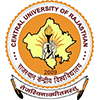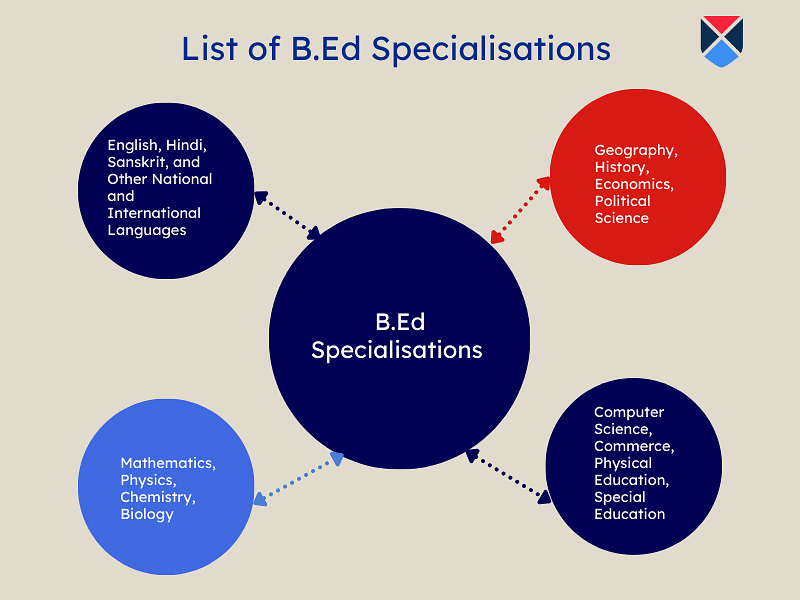
Table of Contents
The LPUNEST syllabus 2025 has been published on the official website by Lovely Professional University (LPU) along with the official brochure. The syllabus comprises topics from Mathematics/Biology, Chemistry, Physics, English and Logical Reasoning at the secondary and higher secondary levels.
Candidates must carefully check the LPUNEST syllabus 2025 to ensure that all topics are covered and prepared well for the LPUNEST exam 2025. It is advised that candidates stick to referring to the prescribed syllabus as most questions are asked from the topics covered under the syllabus. Candidates can visit the page below to check the detailed LPUNEST syllabus and understand the subject-wise weightage in the examination.
Steps to Download LPUNEST Syllabus PDF
Steps to view the LPUNEST syllabus 2025 for all the courses, such as engineering, management, PhD, law and medical laboratory science have been mentioned below.
- Step 1: Candidates must visit the official website of LPUNEST.
- Step 2: Click on 'Admissions'.
- Step 3: Select the course which syllabus they want to view.
- Step 4: Click on 'Information', under the drop-down list select 'Syllabus'.
- Step 5: Candidates can view the entire syllabus online or download it for future reference.
LPUNEST Subject wise Syllabus
The LPUNEST exam is conducted for admission to numerous undergraduate and postgraduate courses. Each subject has its own syllabus and paper pattern. Thus, candidates must check the LPUNEST syllabus of their respective courses carefully to not miss any important topic.
Here’s the subject-wise syllabus for LPUNEST 2025:
LPUNEST 2025 B.Tech Syllabus
Applicants who wish to pursue a B.Tech course at the Lovely Professional University after clearing LPUNEST 2025 have to cover the official syllabus announced by the organizing authorities. Candidates who are applying for Lateral entry also have a similar syllabus as the B tech course. The LPUNEST syllabus 2025 for B.tech is mentioned below:
LPUNEST Syllabus for Chemistry
The LPUNEST Chemistry syllabus is divided into 4 units. Applicants are advised to cover all the mentioned topics falling under LPUNEST syllabus 2025 for Chemistry subjects. Applicants can go through the detailed LPUNEST syllabus given below:
| LPUNEST 2025 Chemistry Syllabus | |
| UNIT 1: Atomic Structure, States of Matter & Thermodynamic | |
| Some Basic Concepts in Chemistry | Chemical bonding and molecular structure |
| States of matter | Covalent Bonding |
| Gaseous State | Quantum mechanical approach to covalent bonding |
| Liquid State | Molecular Orbital Theory |
| Solid State | Chemical thermodynamics |
| Atomic structure | The first law of thermodynamics |
| The second law of thermodynamics | - |
| Solutions | Redox reactions and electrochemistry |
| UNIT 2: Solutions, Chemical Kinetics & Surface Chemistry | |
| Equilibrium | Electrochemical cells |
| Equilibria involving physical processes | Chemical kinetics |
| Equilibria involving chemical processes | Surface chemistry |
| Ionic equilibrium | - |
| UNIT 3: Hydrogen & s - Block Element | |
| Classification of elements and periodicity in properties | Hydrogen |
| General principles and processes of isolation of metals | s - Block elements (alkali and alkaline earth metals) Group - 1 and 2 Elements |
| UNIT 4: p, d & f Block Elements and Environmental Chemistry | |
| p - Block elements | Co-ordinating compounds |
| d – and f – Block elements | Environmental chemistry |
| Inner Transition Elements | Tropospheric pollutants – Gaseous pollutants |
| Stratospheric pollution | - |
| Purification and characterization of organic compounds | Qualitative analysis |
| UNIT 5: Basic Concepts of Organic Chemistry | |
| Quantitative analysis | Some basic principles of organic chemistry |
| Nomenclature (Trivial and IUPAC) Covalent bond | Electronic displacement in a covalent bond |
| Alkanes | Alkenes |
| Alkynes | Aromatic hydrocarbons |
| Organic compounds containing halogens | - |
| Organic compounds containing oxygen | Alcohols |
| UNIT 6: Oxygen, Nitrogen, Polymers & Biomolecules | |
| Phenols | Ethers |
| Aldehyde and Ketones | Carboxylic acids |
| Organic compounds containing nitrogen | Amines |
| Diazonium Salts | Polymers |
| Biomolecules | Carbohydrates |
| Proteins | Vitamins |
| Nucleic acids | Chemistry in everyday life |
| Chemicals in food | Cleansing agents |
LPUNEST Syllabus for Physics
Applicants can obtain several useful study materials to prepare for LPUNEST Physics syllabus 2025. The reference books to practice topics covered in physics are available on both retail and online platforms. The detailed syllabus for LPUNEST is mentioned below:
| LPUNEST 2025 Physics Syllabus | |
| UNIT 1: Motion | |
| Laws of motion | Rotational motion |
| Work, energy, and power | - |
| UNIT 2: Kinematics, Gravitation & Oscillations | |
| Physics and measurement | Gravitation |
| Kinematics | Oscillations and waves |
| UNIT 3: Thermal Physics | |
| Properties of solids and liquids | Kinetic theory of gases |
| Thermodynamics | - |
| UNIT 4: Electricity & Magnetism | |
| Electrostatics: | Magnetic effects of current and magnetism: |
| Current electricity: | - |
| UNIT 5: Atomic Structure & Optics | |
| Atoms and nuclei | Optics |
| Dual nature of matter and radiation | Wave Optics |
| UNIT 6: Electrical & Electronics | |
| Electromagnetic induction and alternating currents | Electronic devices |
| Electromagnetic waves | - |
LPUNEST Syllabus of Mathematics
Mathematics is one of the most crucial subjects in the LPUNEST syllabus 2025. Applicants can go through the detailed syllabus as mentioned below:
| LPUNEST 2025 Mathematics Syllabus | |
| UNIT 1: Algebra | |
| Sets, relations, and functions | Complex numbers and quadratic equations |
| Sequences and series | - |
| UNIT 2: Matrices, Vectors & Reasoning | |
| Matrices & Determinants | Vector algebra |
| Mathematical reasoning | Oscillations and waves |
| UNIT 3: Permutation-Combinations & Binomial Theorem | |
| Permutations and Combinations | Mathematical induction |
| Binomial theorem and its simple applications | - |
| UNIT 4: Limit, Integration & Differentiation | |
| Limit, continuity, and differentiability | Integral calculus: |
| UNIT 5: Geometry | |
| Coordinate geometry | Straight lines |
| Circles, conic sections | Three Dimensional Geometry |
| UNIT 6: Probability & Trigonometry | |
| Statistics and probability | Probability |
| Trigonometry | - |
LPUNEST 2025 Syllabus for Biology
The official authorities announce the Biology syllabus for LPUNEST. Applicants are advised to go through it carefully before strategizing the preparation process for the LPUNEST 2025.
| LPUNEST 2025 Biology Syllabus | |
| Unit 1: Diversity & Structural Organisation | |
| Five kingdom classification | Structural Organisation in Animals and Plants |
| Cell Structure and Function | B Cell division |
| Unit 2: Plant Physiology | |
| Transport in plants | Mineral nutrition |
| Photosynthesis | Respiration |
| Plant growth and development | - |
| Unit 3: Human Physiology | |
| Digestion and absorption | Breathing and Respiration |
| Body fluids and circulation | Excretory Products and their elimination |
| Locomotion and Movement | Neural control and coordination |
| Chemical coordination and regulation | - |
| Unit 4: Reproduction, Genetics, and Evolution | |
| Reproduction in organisms | Sexual reproduction in powering plants |
| Human Reproduction | Reproductive health |
| Genetics and Evolution | Molecular Basis of Inheritance |
| Evolution | |
| Unit 5: Biology, Biotechnology, and Human Welfare | |
| Health and Disease | Improvement in food production |
| Microbes in human welfare | Biotechnology and Its Applications |
| Application of Biotechnology in health and agriculture | - |
| Unit 6: Ecology and Environment | |
| Organisms and environment | Ecosystem |
| Biodiversity and its conservation | Environmental issues |
Unit 1: Diversity & Structural Organisation
- What is living? Biodiversity; Need for classification; Three domains of life; Taxonomy & Systematics; Concept of species and taxonomical hierarchy; Binomial nomenclature; Tools for study of Taxonomy – Museums, Zoos, Herbaria, Botanical gardens.
- Five kingdom classification: Salient features and classification of Monera; Protista and Fungi into major groups; Lichens; Viruses and Viroids, Salient features and classification of plants into major groups-Algae, Bryophytes, Pteridophytes, Gymnosperms and Angiosperms; Angiosperms- classification up to class, characteristic features and examples, Salient features and classification of animals- non-chordate up to phyla level and chordate up to classes level.
- Structural Organisation in Animals and Plants: Morphology and modifications; Tissues; Anatomy and functions of different parts of flowering plants: Root, stem, leaf, inflorescence- cymose and racemose, flower, fruit and seed, Animal tissues; Morphology, anatomy and functions of different systems (digestive, circulatory, respiratory, nervous and reproductive) of an insect (cockroach).
- Cell Structure and Function: Cell theory and cell as the Basic Unit of life; Structure of prokaryotic and eukaryotic cell; Plant cell and animal cell; Cell envelope, cell membrane, cell wall; Cell organelles-structure and function; Endomembrane system-endoplasmic reticulum, Golgi bodies, lysosomes, vacuoles; mitochondria, ribosomes, plastids, microbodies; Cytoskeleton, cilia, flagella, centrioles (ultrastructure and function); Nucleus-nuclear membrane, chromatin, nucleolus. Chemical constituents of living cells: Biomolecules-structure and function of proteins, carbohydrates, lipids, nucleic acids; Enzymes-types, properties, enzyme action;
- Cell division: Cell cycle, mitosis, meiosis and their significance.
Unit 2: Plant Physiology
- Transport in plants: Movement of water, gases and nutrients; Cell to cell transport-Diffusion, facilitated diffusion, active transport; Plant – water relations – Imbibition, water potential, osmosis, plasmolysis; Long-distance transport of water – Absorption, apoplast, symplast, transpiration pull, root pressure and guttation; Transpiration-Opening and closing of stomata; Uptake and translocation of mineral nutrients-Transport of food, Phloem transport, Mass flow hypothesis; Diffusion of gases.
- Mineral nutrition: Essential minerals, macro and micronutrients and their role; Deficiency symptoms; Mineral toxicity; Elementary idea of Hydroponics as a method to study mineral nutrition; Nitrogen metabolism-Nitrogen cycle, Biological Nitrogen fixation.
- Photosynthesis: Photosynthesis as a means of Autotrophic nutrition; Site of photosynthesis take place; pigments involved in Photosynthesis (Elementary idea); Photochemical and biosynthetic phases of photosynthesis; Cyclic and non-cyclic and photophosphorylation; Chemiosmotic hypothesis; Photorespiration C3 and C4 pathways; Factors affecting photosynthesis.
- Respiration: Exchange gases; Cellular respiration- glycolysis, fermentation (anaerobic), TCA cycle and electron transport system (aerobic); Energy relations- Number of ATP molecules generated; Amphibolic pathways; Respiratory quotient.
- Plant growth and development: Seed germination; Phases of Plant growth and plant growth rate; Conditions of growth; Plant growth and development: Seed germination; Conditions of growth; Differentiation, dedifferentiation and redifferentiation; Sequence of developmental process in a plant cell; Growth regulators-auxin, gibberellin, cytokinin, ethylene, ABA; Seed dormancy; Vernalisation; Photoperiodism.
Unit 3: Human Physiology
- Digestion and absorption: Alimentary canal and digestive glands; Role of digestive enzymes and gastrointestinal hormones; Peristalsis, digestion, absorption and assimilation of proteins, carbohydrates and fats; Caloric value of proteins, carbohydrates and fats; Egestion; Nutritional and digestive disorders – PEM, indigestion, constipation, vomiting, jaundice, diarrhoea.
- Breathing and Respiration: Respiratory organs in animals; Respiratory system in humans; Mechanism of breathing and its regulation in humans- Exchange of gases, transport of gases and regulation of respiration Respiratory volumes; Disorders related to respiration-Asthma, Emphysema, Occupational respiratory disorders.
- Body fluids and circulation: Composition of the blood, blood groups, coagulation of blood; Composition of lymph and its function; Human circulatory system-Structure of human heart and blood vessels; Cardiac cycle, cardiac output, ECG, Double circulation; Regulation of cardiac activity; Disorders of circulatory system-Hypertension, Coronary artery disease, Angina pectoris, Heart failure.
- Excretory Products and their elimination: Modes of excretion- Ammonotelism, ureotelism, uricotelism; Human excretory system structure and function; Urine formation, Osmoregulation; Regulation of kidney function-Renin- angiotensin, Atrial Natriuretic Factor, ADH and Diabetes insipidus; Role of other organs in excretion; Disorders; Uraemia, Renal failure, renal calculi, Nephritis; Dialysis and artificial kidney.
- Locomotion and Movement: Types of movement- ciliary, flagellar, muscular; Skeletal muscle- contractile proteins and muscle contraction; Skeletal system and its functions; Joints; Disorders of muscular and skeletal system-Myasthenia Gravis, Tetany, Muscular dystrophy, Arthritis, Osteoporosis, Gout.
- Neural control and coordination: Neuron and nerves; Nervous system in humans- central nervous system, peripheral nervous system and visceral nervous system; Generation and conduction of nerve impulse; Reflex action; Sense organs; Elementary structure and function of eye and ear.
- Chemical coordination and regulation: Endocrine glands and hormones; Human endocrine system-Hypothalamus, Pituitary, Pineal, Thyroid, Parathyroid, Adrenal, Pancreas, Gonads; Mechanism of hormone action; Role of hormones as messengers and regulators, Hypo-and hyperactivity and related disorders (Common disorders e.g. Dwarfism, Acromegaly, Cretinism, goitre, exophthalmic goitre, diabetes, Addison’s disease).
Unit 4: Reproduction, Genetics and Evolution
- Reproduction in organisms: Reproduction, a characteristic feature of all organisms for continuation of species; Modes of reproduction – Asexual and sexual; Asexual reproduction; Modes-Binary fission, sporulation, budding, gemmule, fragmentation; vegetative propagation in plants.
- Sexual reproduction in flowering plants: Flower structure; Development of male and female gametophytes; Pollination-types, agencies and examples; Outbreeding devices; Pollen- Pistil interaction; Double fertilization; Post fertilization events- Development of endosperm and embryo, Development of seed and formation of fruit; Special modes-apomixis, parthenocarpy, polyembryony; Significance of seed and fruit formation.
- Human Reproduction: Male and female reproductive systems; Microscopic anatomy of testis and ovary; Gametogenesis- spermatogenesis & oogenesis; Menstrual cycle; Fertilisation, embryo development up to blastocyst formation, implantation; Pregnancy and placenta formation; Parturition; Lactation.
- Reproductive health: Need for reproductive health and prevention of sexually transmitted diseases (STD); Birth control-Need and Methods, Contraception and Medical Termination of Pregnancy (MTP); Amniocentesis; Infertility and assisted reproductive technologies – IVF, ZIFT, GIFT.
- Genetics and Evolution: Heredity and variation: Mendelian Inheritance; Deviations from Mendelism- Incomplete dominance, Co-dominance, Multiple alleles and Inheritance of blood groups, Pleiotropy; Elementary idea of polygenic inheritance; Chromosome theory of inheritance; Chromosomes and genes; Sex determination-In humans, birds, honey bee; Linkage and crossing over; Sex-linked inheritance-Haemophilia, Colour blindness; Mendelian disorders in humans-Thalassemia; Chromosomal disorders in humans; Down’s syndrome, Turner’s and Klinefelter’s syndromes.
- Molecular basis of Inheritance: Search for genetic material and DNA as genetic material; Structure of DNA and RNA; DNA packaging; DNA replication; Central dogma; Transcription, genetic code, translation; Gene expression and regulation- Lac Operon; Genome and human genome project; DNA fingerprinting.
- Evolution: Origin of life; Biological evolution and evidence for biological evolution from Paleontology, comparative anatomy, embryology and molecular evidence; Darwin’s contribution, Modern Synthetic Theory of Evolution; Mechanism of evolution-Variation (Mutation and Recombination) and Natural Selection with examples, types of natural selection; Gene flow and genetic drift; Hardy-Weinberg’s principle; Adaptive Radiation; Human evolution.
Unit 5: Biology, Biotechnology and Human Welfare
- Health and Disease: Pathogens; parasites causing human diseases (Malaria, Filariasis, Ascariasis Typhoid, Pneumonia, common cold, amoebiasis, ringworm); Basic concepts of immunology-vaccines; Cancer, HIV and AIDS; Adolescence, drug and alcohol abuse.
- Improvement in food production: Plant breeding, tissue culture, single-cell protein, Biofortification; Apiculture and Animal husbandry.
- Microbes in human welfare: In household food processing, industrial production, sewage treatment, energy generation and as biocontrol agents and biofertilizers.
- Biotechnology and Its Applications: Principles and process of Biotechnology: Genetic engineering (Recombinant DNA technology).
- Application of Biotechnology in health and agriculture: Human insulin and vaccine production, gene therapy; Genetically modified organisms-Bt crops; Transgenic Animals; Biosafety issues-Biopiracy and patents.
Unit 6: Ecology and Environment
- Organisms and environment: Habitat and niche; Population and ecological adaptations; Population interactions- mutualism, competition, predation, parasitism; Population attributes-growth, birth rate and death rate, age distribution.
- Ecosystem: Patterns, components; productivity and decomposition; Energy flow; Pyramids of number, biomass, energy; Nutrient cycling (carbon and phosphorous); Ecological succession; Ecological Services-Carbon fixation, pollination, oxygen release.
- Biodiversity and its conservation: Concept of Biodiversity; Patterns of Biodiversity; Importance of Biodiversity; Loss of Biodiversity; Biodiversity conservation; Hotspots, endangered organisms, extinction, Red Data Book, biosphere reserves, National parks and sanctuaries.
- Environmental issues: Air pollution and its control; Water pollution and its control; Agrochemicals and their effects; Solid waste management; Radioactive waste management; Greenhouse effect and global warming; Ozone depletion; Deforestation; Any three case studies as success stories addressing environmental issues.
LPUNEST 2025 Syllabus for English
LPUNEST syllabus for English serves the purpose of determining the English language skills of the applicant. The LPUNEST English syllabus is mentioned below:
| LPUNEST 2025 English | |
|---|---|
| Grammar | Common Error |
| Associative Language Skills | Comprehension Passages |
- Grammar: Parts of speech – Noun, Pronoun, Adjective, Adverb, Verb, Preposition, Conjunction Interjection; Tenses – Present, Past and Future Tense in Active and Passive Form; Modal Verbs – Can, Could, May, Might, Should, Will, Would.
- Associative Language Skills: Vocabulary – Antonyms, Synonyms, One-word substitution, Word Analogies, Idioms and Phrases
- Common Errors: Sentence Correction and Error Finding Exercise.
- Comprehension Passages: Closed and Open paragraphs, identifying key ideas or themes.
LPUNEST 2025 B.Sc Agriculture Syllabus
Applicants who wish to pursue B.Sc in Agriculture from LPUNEST have to cover the official syllabus announced by the university. The syllabus for the same has been given below.
- LPUNEST 2025 Syllabus for English: Antonyms, Synonyms, One-word Substitution, Grammar, Word Analogies, Sentence Correction, Idioms/Phrases, Sentence Correction, Error finding Excercise, Comprehension Passage
- LPUNEST 2025 Syllabus for Biology: Plant Physiology, Human Physiology, Diversity and Structural Organisation, Reproduction, Genetics, and Evolution, Biology, Biotechnology, Human Welfare, Ecology, and Environment.
- LPUNEST 2025 Syllabus for Crop Production: Principles of agronomy, agricultural meteorology, crop ecology, and geography
- LPUNEST 2025 Syllabus for Horticulture: Cultivation Practices, processing, and marketing of fruits, Importance of fruits and vegetables in the human diet, Area and production of various horticulture crops, Crop diversification and processing industries, Tree, shrubs, climbers, perennials, annuals, Principles and methods of fruits and vegetable preservation, Jellies, Jam, ketchup, Chips preparation, and their packing, Orchard location, layout, ornamental gardening, and kitchen garden, Seed propagation, cutting, budding, layering, and grafting
LPUNEST 2025 B.Pharma Syllabus
Applicants who wish to pursue a B.Pharma course at the Lovely Professional University after clearing LPUNEST 2025 have to cover the official syllabus announced by the organizing authorities. The LPUNEST syllabus for B.Pharma is mentioned below:
- LPUNEST Syllabus for English: Antonyms, Synonyms, One-word Substitution, Grammar, Word Analogies, Sentence Correction, Idioms/Phrases, Sentence Correction, Error finding Excercise, Comprehension Passage
- LPUNEST Syllabus for Biology: Plant Physiology, Human Physiology, Diversity and Structural Organisation, Reproduction, Genetics, and Evolution, Biology, Biotechnology, Human Welfare, Ecology, and Environment
- LPUNEST Syllabus for Physics: Kinematics, Gravitation, and Oscillation, Thermal Physics, Atomic Structure and Optics, Electrical and Electronics, Motion
- LPUNEST Syllabus for Chemistry: Hydrogen S - Block Element and P, d, and f block element and environmental chemistry, Atomic structure, states of matter, and thermodynamics, Solutions, chemical kinetics, and surface chemistry, Basic concepts of organic chemistry, Oxygen, nitrogen, Polymers, and Biomolecules
- LPUNEST Syllabus for Mathematics: Geometry, Algebra, Permutations, Combinations, and Binomial Theorem, Limits, Integration and Differentiation, Matrices, Vectors, and reasoning, Trigonometry, and Probability
LPUNEST 2025 MBA Syllabus
Applicants aspiring to get admission into the MBA program offered by Lovely Professional University can apply through LPUNEST 2025 The LPUNEST syllabus for MBA is given below.
LPUNEST English Syllabus
The official authorities announce the English syllabus for LPUNEST 2025 at LPU. Applicants are advised to carefully go through the LPUNEST MBA English syllabus before strategizing the LPUNEST 2025 preparation process.
Grammar
- Tenses
- Part of Speech
- Modal Verbs
Language Skills
- Synonyms
- Antonyms
- One-word substitution
- Idioms-Phrases
- Vocabulary
- Word Analogies
Comprehension Passages
- Theme identification
- Open and closed ideas
LPUNEST 2025 Syllabus for General Aptitude
The syllabus for General Aptitude is mentioned below:
- Syllogism
- Inserting the missing character
- Simple and Compound Interest
- Direct Sense test
- Time and Distance
- Profit
- Loss and Discount
- Ratio-Proportion
- Area
- Percentage
- Arithmetic Reasoning
- Ranking and Time Sequence
- Boats and streams
- Numbers
- Non-verbal reasoning
- Cubes and Dice
- Series completion and coding-decoding
LPUNEST 2025 Syllabus for General Awareness
The syllabus for the General Awareness section in the LPUNEST 2025 is mentioned below:
- Indian Politics
- Science inventions and discoveries
- Budget
- International and National Organizations
- Abbreviations
- Sports
- Indian Economics
- Books and authors
- Current Affairs
- Financial and economical news
- Awards and honours
- Who is who
LPUNEST 2025 Law Syllabus
Applicants can also select the LAW course offered by Lovely Professional University. Applicants are advised to carefully go through the given LAW syllabus for LPUNEST 2025.
LPUNEST Syllabus for Mathematics
The syllabus for mathematics under LPUNEST for LAW course covers elementary standard topics up to class 10th.
- Time
- Ratio
- Real Numbers
- Average
- Speed and Distance
- Time and Work
- Percentage
LPUNEST Logical Reasoning Syllabus
Applicants are advised to go through the given syllabus for the logical reasoning section carefully.
- Pattern Identification
- Syllogisms
- Logical Sequences
- Analogies
- Logical links and rectifications
LPUNEST 2025 Syllabus for Legal Reasoning
The legal reasoning section is part of the LPUNEST syllabus 2025 for LAW. The topics covered under legal reasoning are mentioned below:
- Legal Awareness
- Legal terms
- Legal Maxims
- Important conventions and treaties
- Indian Constitution
LPUNEST Exam Pattern 2025
To form an effective preparation strategy for the LPUNEST 2025 applicants should carefully understand the LPUNEST 2025 exam pattern. The LPUNEST exam pattern is determined by the official authorities responsible for organizing the LPUNEST 2025. The exam pattern for LPUNEST 2025 is given below.
| Exam Mode | Online |
| Exam Type | Multiple Choice Questions (MCQs) |
| Exam Duration | 150 minutes |
| Exam Sections | 4 |
LPUNEST Subject-Wise weightage
LPUNEST syllabus 2025 will be divided into four sections, Chemistry, Physics, Mathematics, Biology, and English. Every section in the LPUNEST carries its own weightage. The marks distribution of LPUNEST 2025 is mentioned in the table below.
| Sections | No. of questions |
Marks per section
|
| Chemistry | 25 | 100 |
| Mathematics | 25 | 100 |
| Biology | 25 | 100 |
| Physics | 25 | 100 |
| English | 15 | 60 |
LPUNEST 2025 Preparation Tips
Aspiring applicants preparing for LPUNEST 2025 should strategize their process carefully. Candidates should find ways to optimize the preparation period before LPUNEST 2025 completely. Applicants can go through a few LPUNEST 2025 preparation tips mentioned below.
- Applicants should acquire good quality study material to cover the LPUNEST syllabus.
- Applicants should form a timetable to structure the preparation process for LPUNEST 2025.
- Applicants are advised to test their preparation by attempting sample papers, previous year's question papers and mock tests of LPUNEST.
- Applicants should follow the proper diet and sleep cycle to maintain their focus.
FAQs on LPUNEST Syllabus
Q: What is the Syllabus of the LPUNEST 2025 exam?
The syllabus of LPUNEST 2025 has been announced for all sections - Physics, Chemistry, Mathematics, Biology, English, and Aptitude. The LPUNEST2025 syllabus consists of topics from Mathematics/Biology, Chemistry, Physics, English and Logical Reasoning at the secondary and higher secondary levels.
Q: What is the LPUNEST 2025 English Syllabus of B.Sc Agriculture?
The LPUNEST 2025 English Syllabus of B.Sc Agriculture consists of Antonyms, Synonyms, One-word Substitution, Grammar, Word Analogies, and more. Check the above article for more.
Q: What is the LPUNEST 2025 crop rotation of B.Sc Agriculture?
The LPUNEST 2025 crop rotation Syllabus of B.Sc Agriculture consists of Principles of agronomy, agricultural meteorology, crop ecology, and geography.
Q: Where can I read more about LPUNEST curriculum?
Candidates must visit the officail poratal. On the homepage, click on highlight and from the dropdown click programmes and curriculum.
Q: What are the various coures offered at LPU?
LPU offers more than 150 programmes in 40+ disciplines. Popular courses offered at the university include MBA, B.Tech, Hotel Management, B.Sc Agriculture and Law, among others. Candidates can visit the official site for more information.























